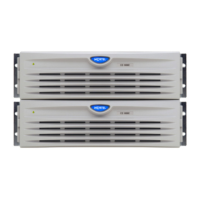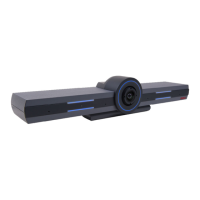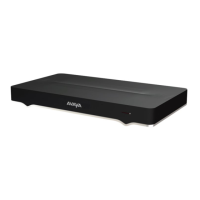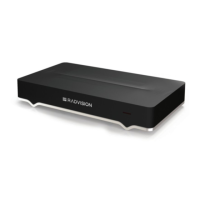Port signals
Pairs Pair color
I/O panel
connectors
Card
portSILC UILC C G M T
5Tx - / 5Tx +
5Rx + / 5Rx -
5T / 5R 44 / 19
45 / 20
Y-BR / BR-Y Y-S / S-
Y
5
6Tx - / 6Tx +
6Rx + / 6Rx -
6T / 6R 46 / 21
47 / 22
V-BL / BL-V V-O / V-
O
6
7Tx - / 7Tx +
7Rx + / 7Rx -
7T / 7R 48 / 23
49 / 24
V-G / G-V V-BR /
BR-V
7
Connecting the ISDN BRI terminals to the DSL
ISDN BRI terminals are connected to DSLs using modular cables up to 10 meters (33 feet)
long, with RJ-45 plugs on each end. One end of the cable plugs into the terminal, and the other
end plugs into the wall outlet.
Note:
All ISDN BRI terminals should comply with CCITT, ANSI, ETSI NET-3, INS NET-64, National
ISDN, 1TR6, Numeris VN2, and D70 standards for terminals, and be compatible with the
system. For a list of compatible terminals, refer to the Avaya ISDN Basic Rate Interface
Feature Fundamentals (NN43001-580).
Figure 9: Connect the ISDN BRI terminal to the S/T interface on page 36 illustrates a terminal
connection to the S/T interface; Figure 10: Connect the ISDN BRI network termination (NT1)
to the U interface on page 37 illustrates a network termination (NT1) connection to the U
interface.
Connecting the ISDN BRI terminals to the DSL
1. Plug one end of the modular cable into the ISDN BRI interface connector on the
terminal and the other end of the modular cable into the wall outlet.
2. For an SILC S/T interface terminal with an optional auxiliary power source, plug the
power source into the wall outlet, then plug the cable into the power source's RJ-45
jack. This power source must supply power only to the local ISDN BRI terminal, not
back into the DSL through the RJ-45 wall outlet. The power adapter is supplied with
the terminal.
3. Program the terminal parameters, such as the Supervisor Position ID (SPID) and
Static Terminal Endpoint Identifier (TEI), as required by the type of terminal. For
detailed information pertaining to this procedure, refer to the section "Initialize ISDN
BRI terminals", found in Avaya ISDN Basic Rate Interface Feature Fundamentals
(NN43001-580).
4. Repeat steps 1 and 3 for each terminal to be connected.
Installing ISDN BRI hardware
34 ISDN Basic Rate Interface Installation and Commissioning March 2011

